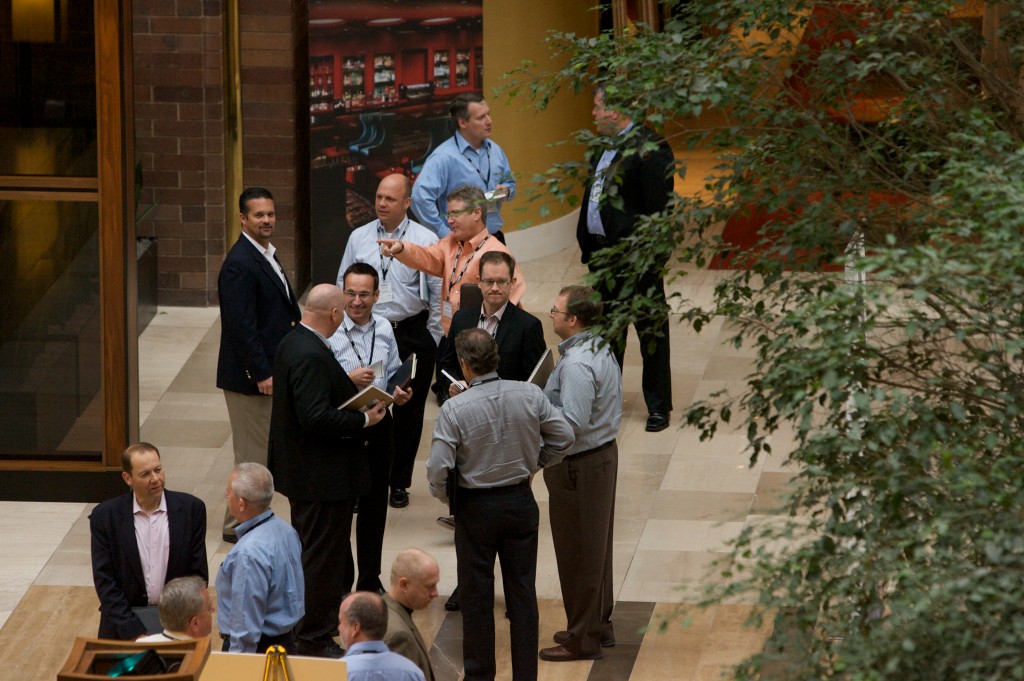Meeting Design for Customer Events

Meetings, conferences, conventions… they’re important tools of corporations and associations, but sometimes they’re not quite what they could be, “broadcasting” to the assembled attendees rather than engaging and connecting with them. Neuroscience researchers Dick and Emily Axelrod developed an approach of “Connection Before Content” which addresses the question of interaction, and how organizations can maximize useful interface with their participating colleagues.

Building Trust – A model that the Axelrod’s put forth is that of the “Meeting Canoe” … an engagement framework that’s envisioned as a flow chart shaped like a canoe navigating the waters of audience engagement, small at the ends, and thick in the middle with those dimensions representing the time devoted to each aspect of the meeting. There are six sections in the canoe, each representing a different phase of the experience.
One: Welcome … this is where you look to bring everybody into a common space, where each attendee feels a part of the whole and your attendees should begin to feel relaxed and comfortable. Keep it simple and keep the bar open so people can focus on meeting old friends and new people.
Two: Connect … be known as “the company with really nice people” encouraging more in-depth networking here, with involvement of key players of the organization so that the participants feel they’re a key part of the event. Opportunities for quality interaction and inter-personal connection are important in this phase.
Three: Discover … your general session structure needs to give context where materials are presented to inform and involve the attendees. By leading them with facts, details and stories your audience can come to the conclusion themselves and are therefore more engaged. That’s why we call it leadership!
Four: Elicit … once the key message points have been delivered to conference participants, you are able to steer towards conversation and get them to express their expectations, ideas, and visions of possibilities. Breakout sessions allow for open, two-way conversations is a key feature of face to face communications, and effectively answering participants’ questions and capturing their ideas is critical to the overall success of the event.
Five: Deciding … the facts have been spelled out, options and ideas have been discussed and brainstormed, now it is time to determine how to move forward. Who will be responsible for which parts? What will be implemented? When can we expect results?
Six: Attend … to the end – giving full due to decisions, agreements, and next steps; giving credit to those who stepped up and showed wisdom, leadership, or dedication in the preceding sections … making the ending as significant and connection-focused as the beginning. It’s time to walk your talk!
Have Fun …As a good host you should round out your agenda by incorporating these six sections of the canoe, and have plenty of time for fun, socializing and networking. Look at having a name speaker or entertainer, and always provide participants with some cool swag.
Summary … Customer conferences are one of the most effective ways to build trust in today’s world of multi-faceted marketing. Connection before Content and the Canoe approach are effective tools to help you create relationships, understand your customers’ needs, and increase sales & market share.
By using these tools you will create a community of devoted customers, suppliers and employees.
More details on how this model can be implemented in your conferences are in Esprit’s new whitepaper: Meeting Design for Customer Events which is downloadable (in .pdf format) via that link.
